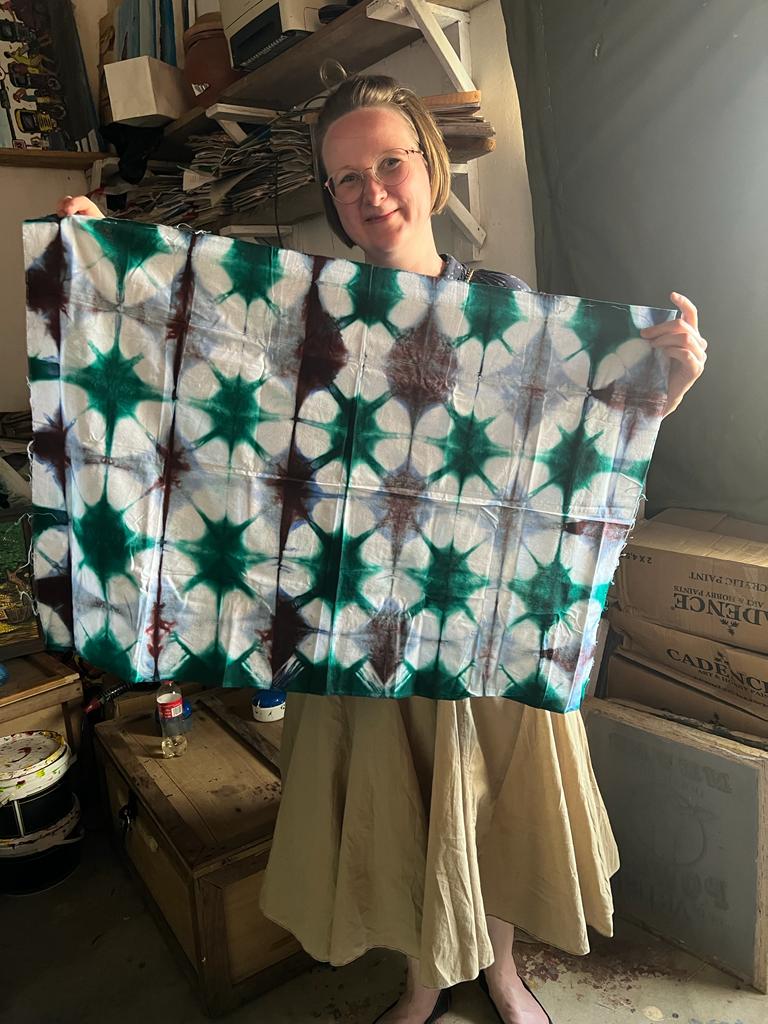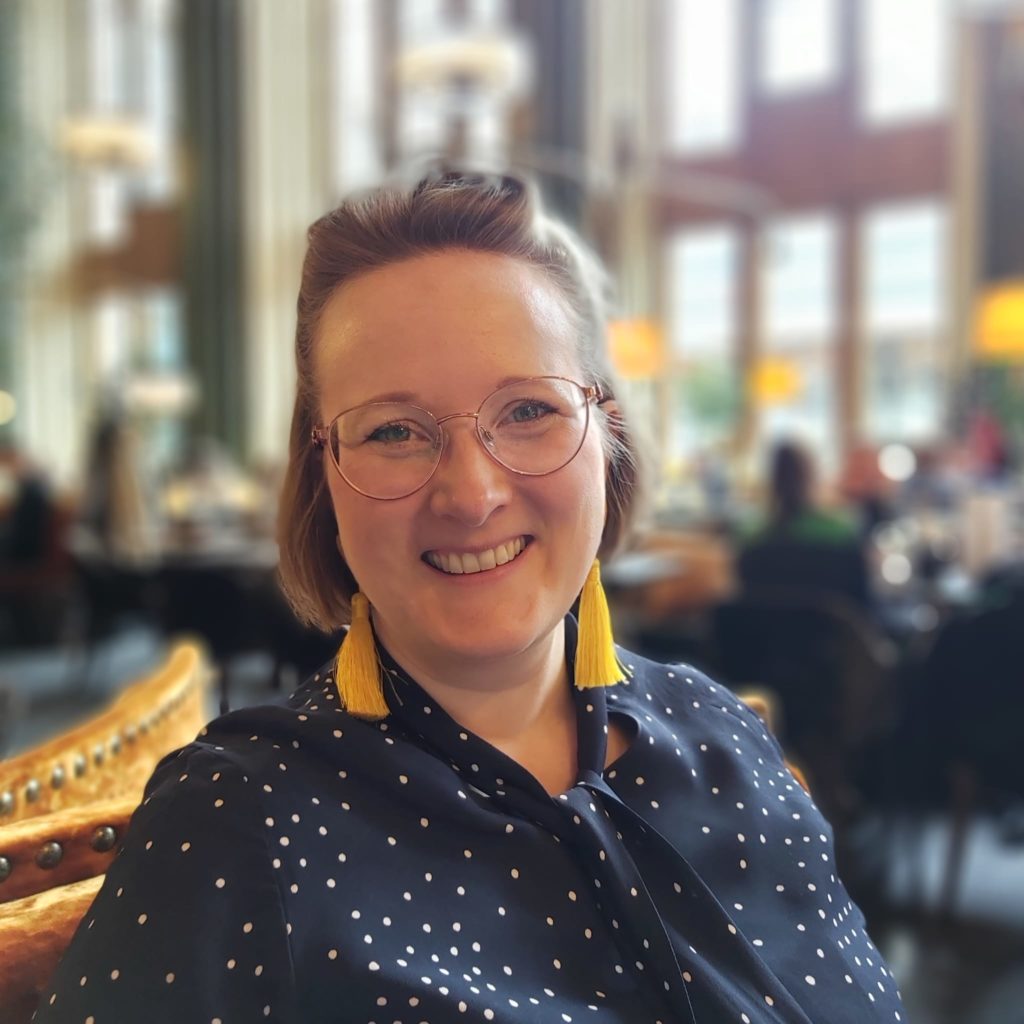CocoEd project update
The CocoEd research project, focusing on the development of hybrid teaching in the Ghanaian teacher education and close cooperation between Ghana and Finland, is well underway. After receiving funding from the University of Helsinki GINTL Africa in the call of Spring 2022, in the beginning of the year 2023, the first data collection was carried out with Ghanaian student teachers.
In addition to producing data, this process also provided valuable information on using WhatsApp discussions as the main source of data. This data is currently being analysed by master’s student Jenni Topp, whose master’s thesis focuses on the Ghanaian student teachers’ views on remote education and their future work as teachers. In the summer, the data collection will continue with a survey and focus group discussions for Ghanaian students.
Laura Pimiä, a master’s student from University of Helsinki, visited Ghana in early spring. The successful visit deepened Laura’s cultural understanding and provided the opportunity to work together on a co-written article with the Ghanaian team. You can read more about Laura’s trip in her blog post below.
In the fall, the project will welcome Hannah Edjah to Finland to work with her post-doc research. Later on, the project is planning to have many kinds of collaborations together with Helsinki, Åbo Akademi and the University of Cape Coast.
Discovering the real life behind the documents: From bachelor’s thesis to Ghanaian home economics classroom
Greetings from a Ghanaian home economics classroom! As a visiting master’s student in Ghana, I had the great opportunity to visit two Ghanaian senior high schools as well as the University of Cape Coast to observe home economics education. During the visits, the syllabi documents, which I had researched and written my bachelor’s thesis about prior to the visit, came alive, and I was able to ponder my thoughts based on the paper to the glimpse of reality in schools. I also had the opportunity to participate in several activities, including cooking traditional Ghanaian dishes, discussions with the teachers and students, as well as sharing information about Finland and Finnish home economics education.
Bachelor’s thesis and international collaboration
When starting my bachelor’s thesis process, I happened to be in the right place at the right time and asking the right questions. One of my teachers, Hille Janhonen-Abruquah, was about to start a research co-operation project between Helsinki University and Ghanaian University of Cape Coast, and the schedule of this collaboration perfectly fit my bachelor’s thesis schedule. Luckily, there was a possibility to welcome a student into the research group to be engaged in the international collaboration.
Thanks to this perfect timing, I both had a very interesting topic for my thesis and got to be part of an international study group. I had a bit of a dual role: on my own, I wrote my thesis; and in the research group, I co-operated with Ghanaian postgraduate student Elizabeth Alpha. The research group also included Hannah Edjah, the main researcher from the University of Cape Coast (UCC). The research group studied possibilities of remote teaching for home economics in Ghana, a country in which home economics is an elective subject in senior high school.
My study focused on the syllabi documents of home economics in senior high school. The purpose of our research was to find ways to conduct remote teaching education utilising the possibilities within the syllabi documents. The Ghanaian home economics syllabi are very detailed documents including the content to be taught as well as teaching and assessment methods. The teachers are guided to follow the syllabus faithfully in their teaching. The teaching language used in Ghanaian schools is English even though many students’ mother languages are local dialects. For some students, this language barrier might be a bit scary.
In Ghana, one of the challenges for remote education is poor Internet availability and reliability. Online education thus has only limited possibilities, meaning that the experiences from Finnish home economics education can only partially be utilised. During my visit, I was able to observe teaching in the classroom and the surrounding society in the light of the syllabi documents. The reality is always so much more vibrant and diverse than what can be imagined based on the written documents.
Visiting Home Economics Education in Ghana
During my visit, I had the opportunity to attend home economics education in two senior high schools and to observe home economics student’s teaching demonstrations in the University of Cape Coast. One of the visible differences between Finnish and Ghanaian schools are the school uniforms. Many students also board in the schools. The senior high school lessons I attended were mostly knowledge-based lessons and the teaching was quite teacher-oriented. I found the students in the lessons rather quiet and obedient: the teachers did not need to raise their voices when speaking. Students were activated by giving an opportunity to brainstorm and comment by raising a hand.

In the syllabi, one very-often-used teaching and learning method is to have discussions and brainstorming sessions. At my desk during the research, I imagined the discussions and brainstorming as a vivid group activity, but at least in these lessons that I observed, the sessions were guided by a teacher. Another difference to Finnish lessons was the use of a whiteboard. Instead of using power point slides, teachers utilised the whiteboard and students wrote the notes in their notebooks.
One of things that I really liked in Ghanaian classrooms is the way the schools used clapping. When some of the students gave good answers, the teacher encouraged the whole group to give the student praise with special applause – rhythmic clapping, or ‘shine’, which is done by rubbing palms together. This was very nice to experience, and I would like to utilise it in future in Finnish classrooms; the students could acknowledge their good performance this way. But generally, teaching is teaching: it is centred on teaching new skills, concepts, knowledge, and reasoning to use this knowledge. Like often in Finland, teachers have tight schedules to cover all the topics. Also based on the brief discussions I had with teachers, the similar concern of youth using mobile phones is present among Ghanaian high schools.
I also followed a teaching session in the University of the Cape Coast. The second-year teacher students gave teaching demos in groups. All the topics were about food and nutrition. They had prepared the written lesson plans and would receive feedback and a grade of these demos. The teacher students practiced how to use the whiteboard, how to interact with the ‘students’, and how to construct a coherent teaching session, including an introduction, targets, covering the main topic and a summary of the topic. One clear difference to Finnish university lessons was the frankness of the feedback. After the demo, groups received peer feedback which was not sugarcoated; they got feedback on the positive aspects of the demos, but also very critical feedback on the things that did not work or could have been done better. I also had a chance to give feedback to the groups. I discussed this afterward with Hannah and I learned that students are used to this way of working and find it useful as the students can learn from mistakes and can prevent repeating them. Apparently, peer students can be bit bothered if they have earlier received criticism of some ways of working and if the critics themselves then repeat the same mistake. I was also able to follow older teacher students in their teaching training sessions in senior high schools. It was a nice opportunity to exchange thoughts within deeper discussions, as I am also attending teaching training in Finland.
Local grocery shopping
Besides the school visits, I visited the local market, church, hairdresser, and local restaurants. The local market is the main place for grocery shopping for Ghanaians. The visit to the market was very interesting for me, as markets have been mentioned several times in the home economics syllabi. The variety of the products and skills of how the seller handled for example crabs made such an impression on me. What skillful expertise! I also admire the way the Ghanaian shopper buys the perfect amount of food they need; for example, some crabs, fresh okro, a few chilis and some cassava dough for konkonte – and it is possible to buy exactly the needed amount of stock cubes. The ingredients are fresh, and no food is wasted when buying only what is required. On top of that, the packaging materials are minimal and without long transport. The pricing in the markets is always the result of negotiation skills, which is a mysterious world of its own.
From observer to student – Traditional Ghanaian cooking
One of the most incredible experiences during my visit was the home economics cooking class in one of the senior high schools. What made the event so unique for me was the fact that the topic of the lessons was traditional Ghanaian festive dishes. I was so lucky! I would have been so grateful to attend the cooking lessons even if the topic was Swiss rolls, but this topic allowed so much more interaction, and almost everything was new to me.

The students were preparing in groups traditional foods from their home regions. The whole lesson was a very nice experience. The teacher welcomed me warmly and the students were very helpful. I circulated around the classroom, observing all the ingredients and all the traditional and modern kitchen utensils. The students were third-year senior high school students – around 17 or 18 years of age. At first, they might have been a bit shy, but they were very friendly at all times nonetheless. I asked lots of questions and took lots of pictures. Soon enough, the students invited me to try the traditional kitchen utensils and traditional way of working. I broke some palm oil nuts in a big grinding mortar and tried to pound the yam to prepare the traditional Ghanaian dish called fufu. Preparing the fufu was very hard work and requires lots of strength and accuracy. I would need so much more practice before I could prepare a fufu.
I was also guided on how to use the Ghanaian blender (earthenware bowl and wooden masher). Many Ghanaian dishes include puréed vegetables and spices. Nowadays, the pulp is prepared with a modern blender. But oh, using the earthenware bowl with the wooden masher was so fun and so difficult at the same time! I had to ask for help from the students, and they were helpful and showed it to me several times. In general, the students were very helpful, and they handled the tools so well. In this lesson I evolved from being an observer to being a participant, with the students as my guides and teachers. They started inviting me to demonstrate the next phase of cooking and showing me how, for example, the palm oil started separating on the top of soup. I also was able to taste the delicious food prepared by students. I felt so grateful for all the friendliness, guidance, and the sheer possibility of attending.
Gaining Perspective
The whole trip was an amazing opportunity to finally meet in person the people I have been working with intensively for more than a year. Also finally seeing the actual Ghanaian schools, classrooms, marketplaces, and Ghanaian peoples gives a whole deeper perspective of the world around the syllabi.
This visit was related to CocoEd-project, a joint research project of the University of Helsinki, Åbo University and the Cape Coast University, with as its goal to develop hybrid teaching for Ghanaian teacher training by means of research. The project was funded by the GINTL network.
The author

Laura Pimiä
Master’s student
laura.pima[at]helsinki.fi













